Bayesian Filtering and Smoothing
Contents
Preface
Symbols and abbreviations
1 What are Bayesian filtering and smoothing?
1.1 Applications of Bayesian filtering and smoothing
1.2 Origins of Bayesian filtering and smoothing
1.3 Optimal filtering and smoothing as Bayesian inference
1.4 Algorithms for Bayesian filtering and smoothing
1.5 Parameter estimation
1.6 Exercises
2 Bayesian inference
2.1 Philosophy of Bayesian inference
2.2 Connection to maximum likelihood estimation
2.3 The building blocks of Bayesian models
2.4 Bayesian point estimates
2.5 Numerical methods
2.6 Exercises
3 Batch and recursive Bayesian estimation
3.1 Batch linear regression
3.2 Recursive linear regression
3.3 Batch versus recursive estimation
3.4 Drift model for linear regression
3.5 State space model for linear regression with drift
3.6 Examples of state space models
3.7 Exercises
4 Bayesian filtering equations and exact solutions
4.1 Probabilistic state space models
4.2 Bayesian filtering equations
4.3 Kalman filter
4.4 Exercises
5 Extended and unscented Kalman filtering
5.1 Taylor series expansions
5.2 Extended Kalman filter
5.3 Statistical linearization
5.4 Statistically linearized filter
5.5 Unscented transform
5.6 Unscented Kalman filter
5.7 Exercises
6 General Gaussian filtering
6.1 Gaussian moment matching
6.2 Gaussian filter
6.3 Gauss–Hermite integration
6.4 Gauss–Hermite Kalman filter
6.5 Spherical cubature integration
6.6 Cubature Kalman filter
6.7 Exercises
7 Particle filtering
7.1 Monte Carlo approximations in Bayesian inference
7.2 Importance sampling
7.3 Sequential importance sampling
7.4 Sequential importance resampling
7.5 Rao–Blackwellized particle filter
7.6 Exercises
8 Bayesian smoothing equations and exact solutions
8.1 Bayesian smoothing equations
8.2 Rauch–Tung–Striebel smoother
8.3 Two-filter smoothing
8.4 Exercises
9 Extended and unscented smoothing
9.1 Extended Rauch–Tung–Striebel smoother
9.2 Statistically linearized Rauch–Tung–Striebel smoother
9.3 Unscented Rauch–Tung–Striebel smoother
9.4 Exercises
10 General Gaussian smoothing
10.1 General Gaussian Rauch–Tung–Striebel smoother
10.2 Gauss–Hermite Rauch–Tung–Striebel smoother
10.3 Cubature Rauch–Tung–Striebel smoother
10.4 General fixed-point smoother equations
10.5 General fixed-lag smoother equations
10.6 Exercises
11 Particle smoothing
11.1 SIR particle smoother
11.2 Backward-simulation particle smoother
11.3 Reweighting particle smoother
11.4 Rao–Blackwellized particle smoothers
11.5 Exercises
12 Parameter estimation
12.1 Bayesian estimation of parameters in state space models
12.2 Computational methods for parameter estimation
12.3 Practical parameter estimation in state space models
12.4 Exercises
13 Epilogue
13.1 Which method should I choose?
13.2 Further topics
Appendix Additional material
A.1 Properties of Gaussian distribution
A.2 Cholesky factorization and its derivative
A.3 Parameter derivatives for the Kalman filter
A.4 Parameter derivatives for the Gaussian filter
References
Index
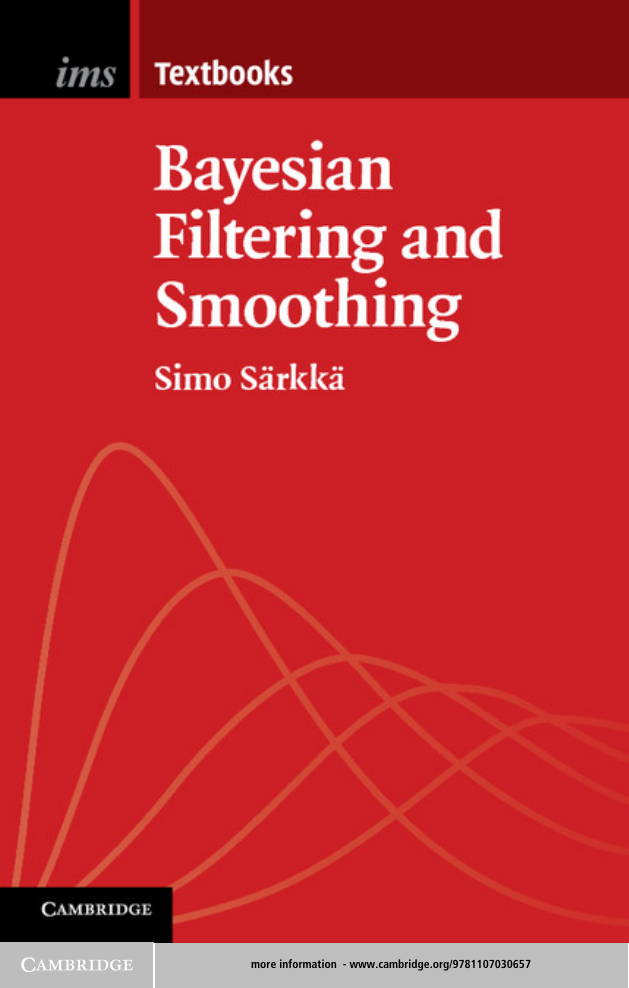

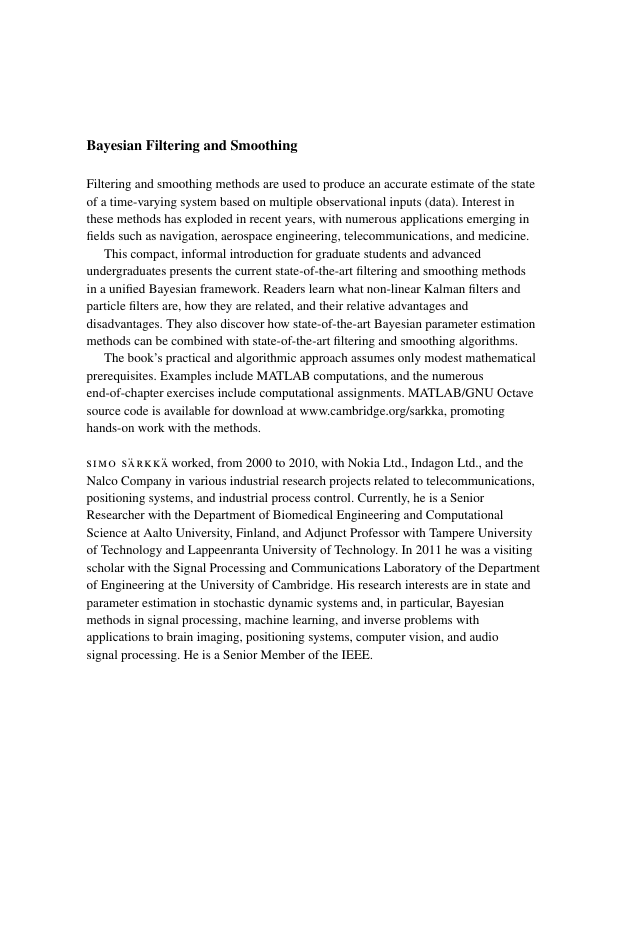
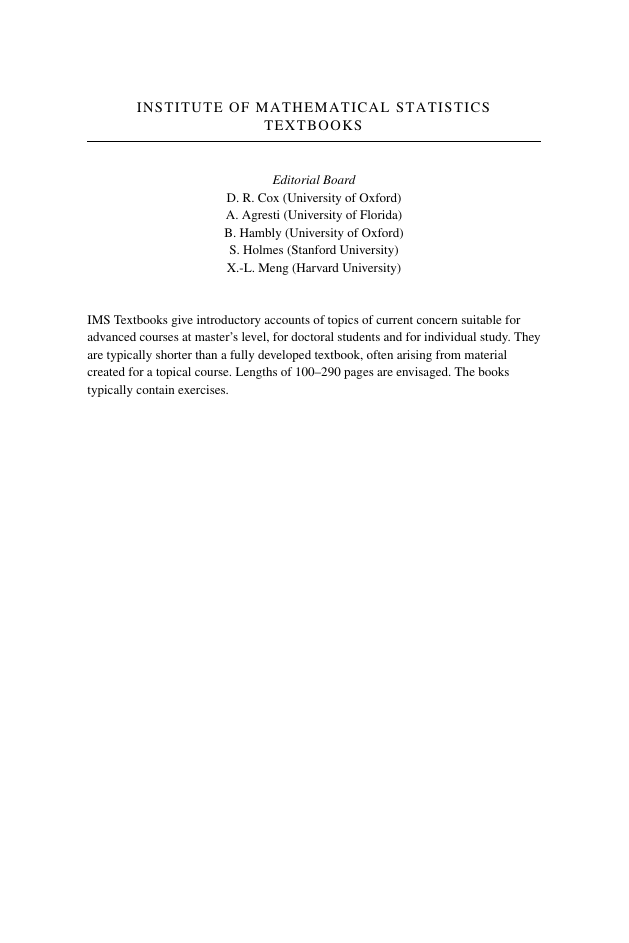
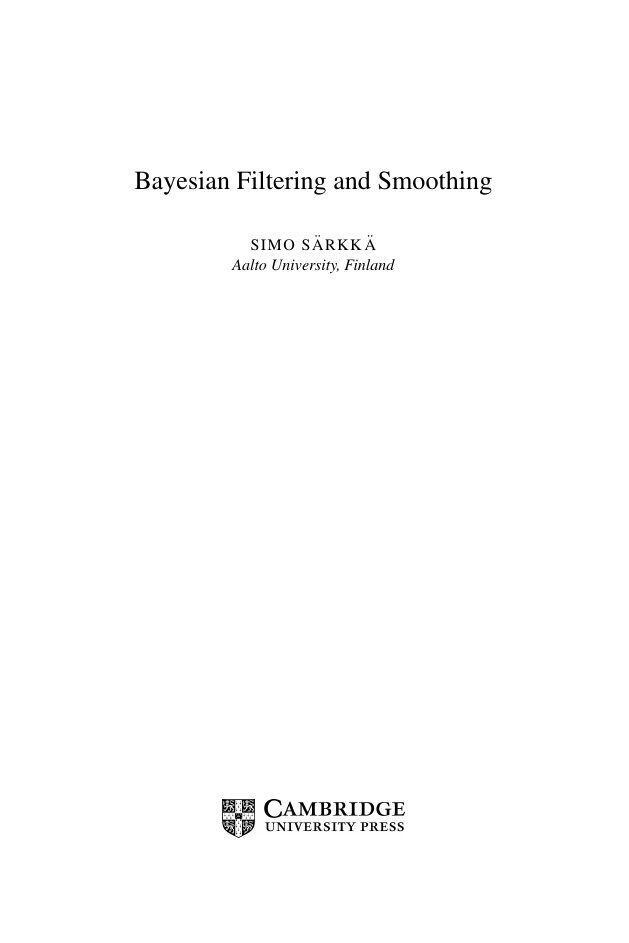
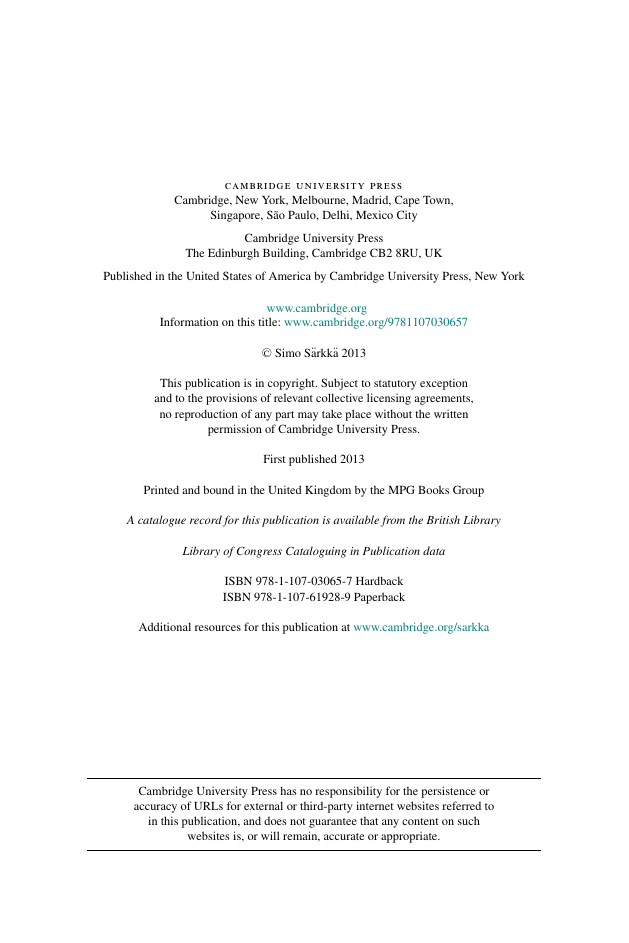
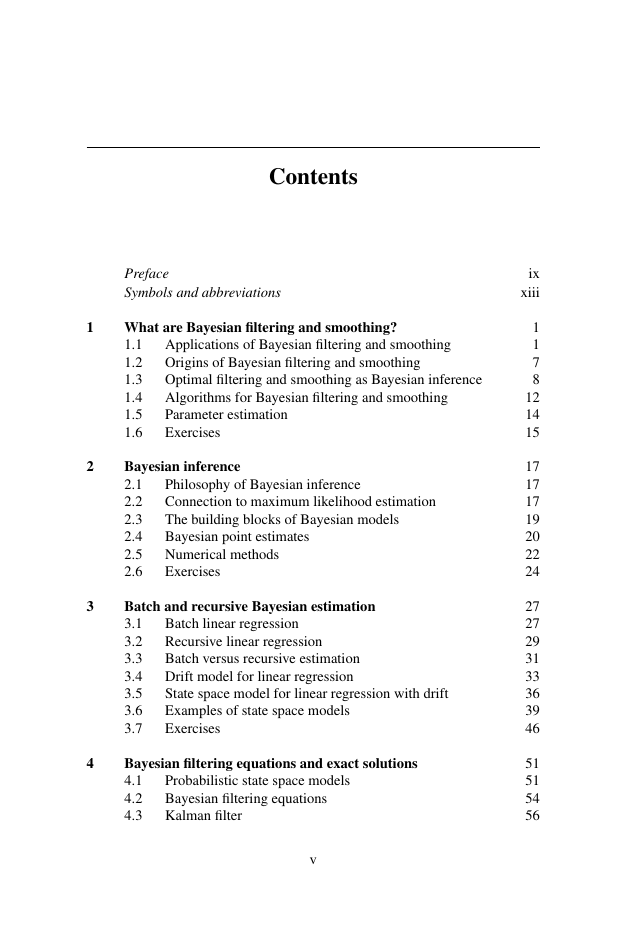
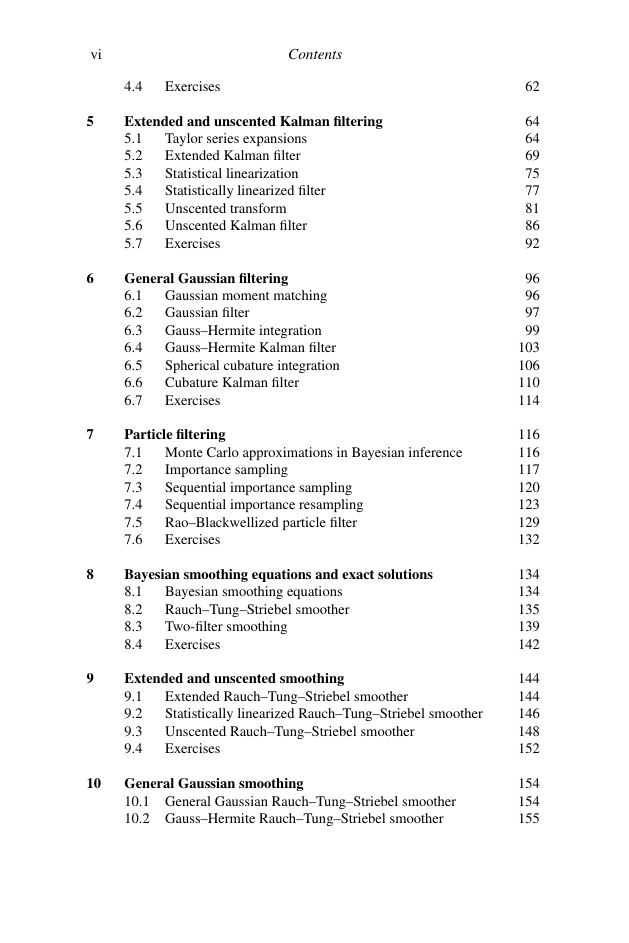








 2023年江西萍乡中考道德与法治真题及答案.doc
2023年江西萍乡中考道德与法治真题及答案.doc 2012年重庆南川中考生物真题及答案.doc
2012年重庆南川中考生物真题及答案.doc 2013年江西师范大学地理学综合及文艺理论基础考研真题.doc
2013年江西师范大学地理学综合及文艺理论基础考研真题.doc 2020年四川甘孜小升初语文真题及答案I卷.doc
2020年四川甘孜小升初语文真题及答案I卷.doc 2020年注册岩土工程师专业基础考试真题及答案.doc
2020年注册岩土工程师专业基础考试真题及答案.doc 2023-2024学年福建省厦门市九年级上学期数学月考试题及答案.doc
2023-2024学年福建省厦门市九年级上学期数学月考试题及答案.doc 2021-2022学年辽宁省沈阳市大东区九年级上学期语文期末试题及答案.doc
2021-2022学年辽宁省沈阳市大东区九年级上学期语文期末试题及答案.doc 2022-2023学年北京东城区初三第一学期物理期末试卷及答案.doc
2022-2023学年北京东城区初三第一学期物理期末试卷及答案.doc 2018上半年江西教师资格初中地理学科知识与教学能力真题及答案.doc
2018上半年江西教师资格初中地理学科知识与教学能力真题及答案.doc 2012年河北国家公务员申论考试真题及答案-省级.doc
2012年河北国家公务员申论考试真题及答案-省级.doc 2020-2021学年江苏省扬州市江都区邵樊片九年级上学期数学第一次质量检测试题及答案.doc
2020-2021学年江苏省扬州市江都区邵樊片九年级上学期数学第一次质量检测试题及答案.doc 2022下半年黑龙江教师资格证中学综合素质真题及答案.doc
2022下半年黑龙江教师资格证中学综合素质真题及答案.doc